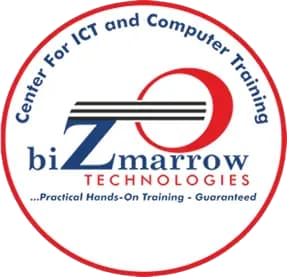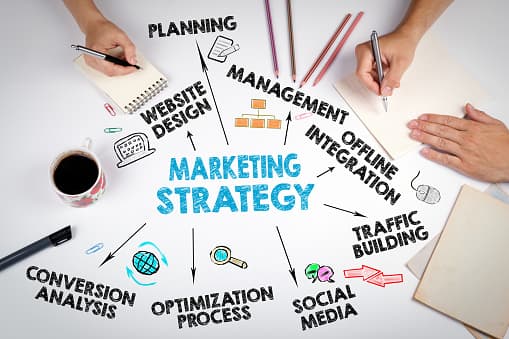How to start and build a career in Graphic design in Abuja Nigeria
Wondering how to get a career in graphic design? You’re certainly not alone. With many creatives rethinking their career options after a tumultuous time, there is a lot of competition out there at the moment – but also a lot of opportunity.
There are a variety of routes to consider pursuing to get you where you want to be in a successful graphic design career, with no ‘one true path’ to follow. It’s about seizing opportunities, working hard and attacking every project with vigor, passion and determination.
What is Graphic design?
Graphic design is the art or profession of visual communication that combines images, words, and ideas to convey information to an audience, especially to produce a specific effect.
In other words, graphic design is communication design; It’s a way of conveying ideas through visuals and design.
But believe it or not, graphic design isn’t a black and white concept. To fully grasp the concept of graphic design, it’s important to have a solid understanding of the elements and principles that make up design.
Starting a graphic design career can seem like an intimidating task but that’s where we (Bizmarrow Technologies) come in!
What is a graphic designer?
Now that we’ve covered the different types of graphic design, let’s tackle the next big question:
Who is a graphic designer?
To put it simply, graphic designers are visual communicators and problem solvers.
I give you this broad definition because, considering there are many different types of graphic design, a career in graphic design can mean many different things. And quite frankly, the profession can tie back to any of those specializations.
But for the sake of keeping things simple, let’s cover the basics of a career in graphic design.
If you choose to work in graphic design, you can work in a few different settings. You can,
Work for industry-related companies, like design consultancies or branding agencies (agency graphic designer)
Work with any company (in-house graphic designer)
Work remotely on your own (freelance graphic designer)
Agency Graphic Designer
Many companies hire graphic design agencies to handle their designs for them. So if you’re working as an agency graphic designer, chances are you’ll be receiving a creative brief from companies to work on projects for many different brands. If you’re working as an agency designer, you’re expected to be a design expert. Often times, agency graphic designers are very specialized in areas of graphic design.
In-house Graphic Designer
If you’re working as an in-house graphic designer, you’re employed by an established company and your work revolves around that single brand only. In this scenario, you’re more of a graphic design generalist so that you can meet all the creative needs of your organization.
Freelance Graphic Designer
Working as a freelance graphic designer is quite possibly the most difficult, in my opinion, because not only are you expected to handle all design requests, but you’re also responsible for running every aspect of your business. Sure, there are perks like working on your own time and in your own space, but you will need knowledge in more areas than just graphic design.
What does a graphic designer do?
A graphic designer’s primary job is to create visual concepts that communicate solutions and ideas that inspire, inform and captivate consumers. To do this, graphic designers combine art and technology to produce end results that resonate with their target audience.
While goals can be dependent upon the type of graphic design, graphic designers are primarily focused on making whatever organization they are designing for recognizable. They’re there to help build a brand identity, boost that company’s brand and communicate their messages through visually-pleasing content.
Graphic design is becoming increasingly important in the marketing and sales of both companies and products. That being said, graphic designers tend to work closely with public relations and marketing professionals to better understand how they can communicate the messages that they need to.
How to build and start a career in Graphic Design
Earn a degree in Graphic Design
There was a time when a graphic designer could get hired strictly on their creative portfolio. Today, however, most employers are looking for designers with a more complete and well-rounded education – the kind only a degree can provide. A certificate in the field, or an associate’s degree, may be sufficient in some cases.
There are also a growing number of programs available for that purpose which is what Bizmarrow Technologies offers. Coursework covers a wide range of subjects, such as studio art, principles of design, commercial graphics, web design, advertising and graphics-related computer technology.
Classes in marketing and business may be part of the curriculum as well, since designers must be able to compile and submit professional job proposals, and effectively sell themselves to potential clients.
Regardless of the specific degree they choose, graphic design students should look for an accredited program from a reputable tech institution like Bizmarrow Technologies.
Practical Hands on Training
Graphic design requires a good eye and a creative mind, but also tantamount are the development of solid practical skills and software fluency which are perfectly taught at Bizmarrow Technologies. The sooner the student begins preparations, the better.
The importance of practical hands on training cannot be overemphasized and the following are few out of many things you will learn:
Graphic design basics
To better understand the meaning of graphic design, it is important to be aware of the elements and principles that make up design. Elements are used in conjunction or opposition with each other to create visually striking and impactful designs.
These graphic design elements include:
Color
Form
Line
Shape
Size
Space
Texture
Graphic designers also adhere to the principles of design, which are essentially a set of guidelines that help a design achieve effective composition. These basic principles aid in creating balance and stability for the piece of work.
These graphic design principles include:
Balance
Contrast
Emphasis
Movement
Proportion
Rhythm
You’ve heard the old saying that “rules are meant to be broken,” which can certainly ring true in this case. But a good graphic designer must first understand these principles before making the conscious decision to break them.
Learn from creative professionals who gladly share their tips, techniques and workflows in some of the most widely used graphic design programs including: Corel draw, Adobe Photoshop, Adobe InDesign and Adobe Illustrator at Bizmarrow Technologies.
A Graphic Designer must correctly use typography, imagery, composition, layout, and color to solve visual communication problems
Types of graphic design
As mentioned earlier, there is no single graphic design meaning. Graphic design is composed of many fields and specializations, ranging from print and web design to animation and motion graphics.
Graphic design offers opportunities and options for individuals of almost any interest.
If you’d asked someone 30 years ago to define graphic design, their answer would have likely been focused on print-related examples like magazines, movie posters and advertisements.
Now we’re living in the digital age, which has given birth to several new types of graphic design.
Some of the most notable modern-day graphic design examples stem from advancements in technology. Here’s a glimpse of some of these types of graphic design:
Website design involves creating engaging and intuitive web pages for users. This includes overall layout, color scheme and navigation.
User experience (UX) design is focused on ensuring a website or application is easy and satisfying to use. These designers emphasize value, usability, adoptability and desirability.
Motion graphics design—or animation—brings visual elements to life through special effects, TV shows, video games and movies.
Successful graphic designers incorporate a fundamental formal knowledge of artistic communications theory with a fluency in using contemporary design tools.
These tools are many and varied, and which the graphic designer uses will be dependent on their area of specialization within the field.
For the print designer, key graphics programs include:
QuarkXPress
Adobe FrameMaker
Adobe InDesign
Adobe PageMaker
The digital designer uses software including:
Adobe Illustrator
CorelDraw Graphics Suite
Adobe Fireworks
Adobe FreeHand
Digital designers that work in the online environment can benefit by using:
Adobe Flash Player
Adobe Dreamweaver
Macromedia HomeSite
Among the key software tools for motion graphics designers are:
Autodesk Maya
CINEMA 4D
3D Studio Max
MoGraph
Adobe After Effects
Of course, generalists may have a foundational skill set in a number of print and digital environments, or they may choose to specialize just in one or two key programs. Flexibility, as always, remains a key attribute of a successful design career.
Common graphic design jobs
With technological advancements introducing new types of graphic design, there has also been an emergence of new graphic design jobs. This evolution has changed the entire landscape of careers in this field.
Graphic designer
User experience (UX) designer
Web designer
Art director
Creative director
As you can see, once armed with the proper knowledge and practical hands-on training at Bizmarrow Technologies, there are several graphic design job options out there. You have the ability to cater your career to your personal skills and interests.
By the end of this graphics design training, you will learn to create your own logos, business cards, Magazine Covers and Much More.
Come and Embark on the Journey to Explore your Creative Genius while creating a future for yourself in the field.
Training Delivery Methods
Physical class training
Join our physical instructor-led interactive, and practical hands-on training in our training centers in Nigeria.
Live online training
learn from the comfort of your home or offices with our Virtual Instructor-Led live online, interactive, and practical hands-on training
Conclusion
Graphic design is becoming increasingly important in the marketing and sales of both companies and products.
Start, build and create a future for yourself in the creative space by getting the pragmatic mode of learning (Practical Hands-on Training) at Bizmarrow Technologies.


